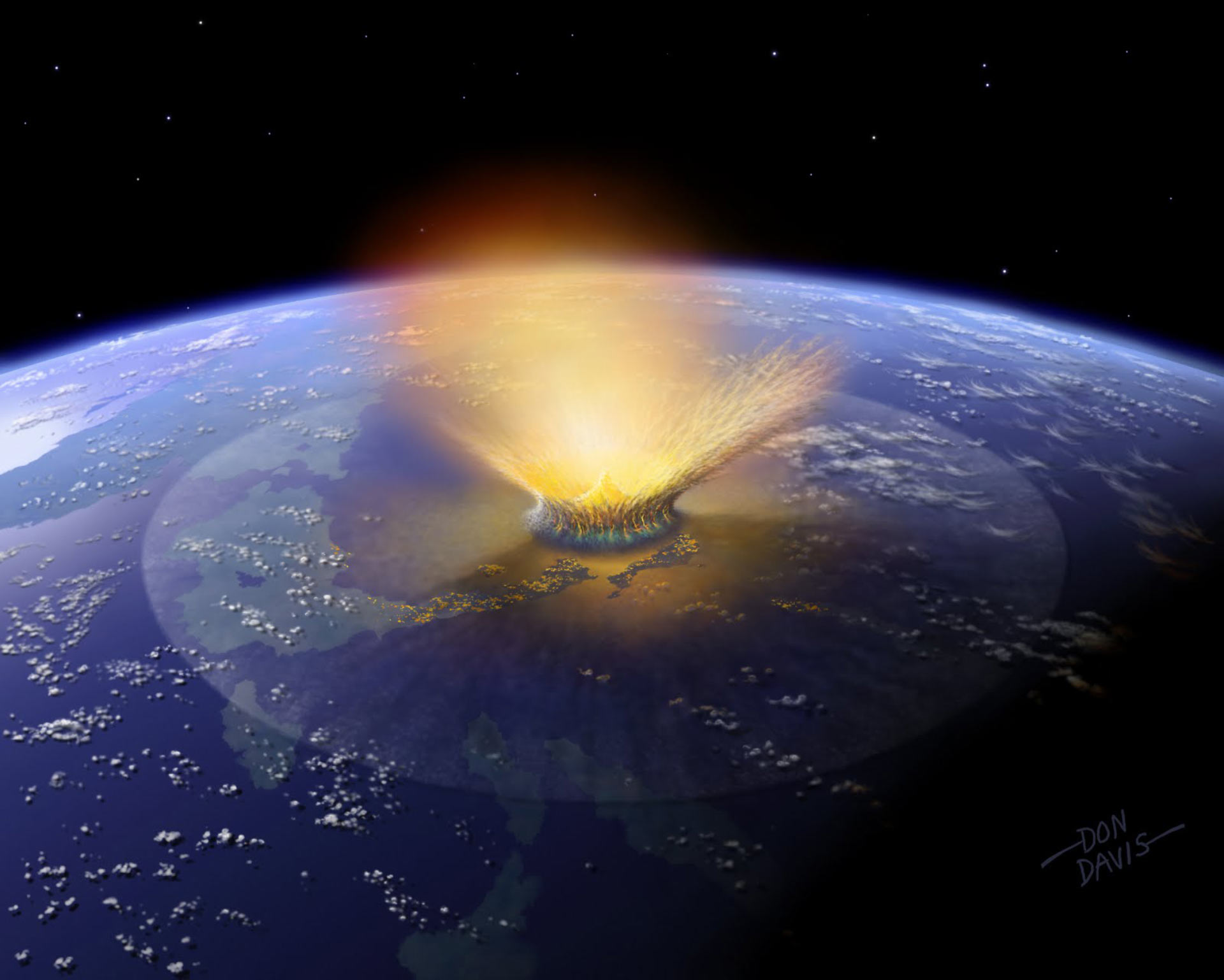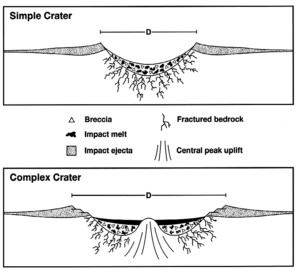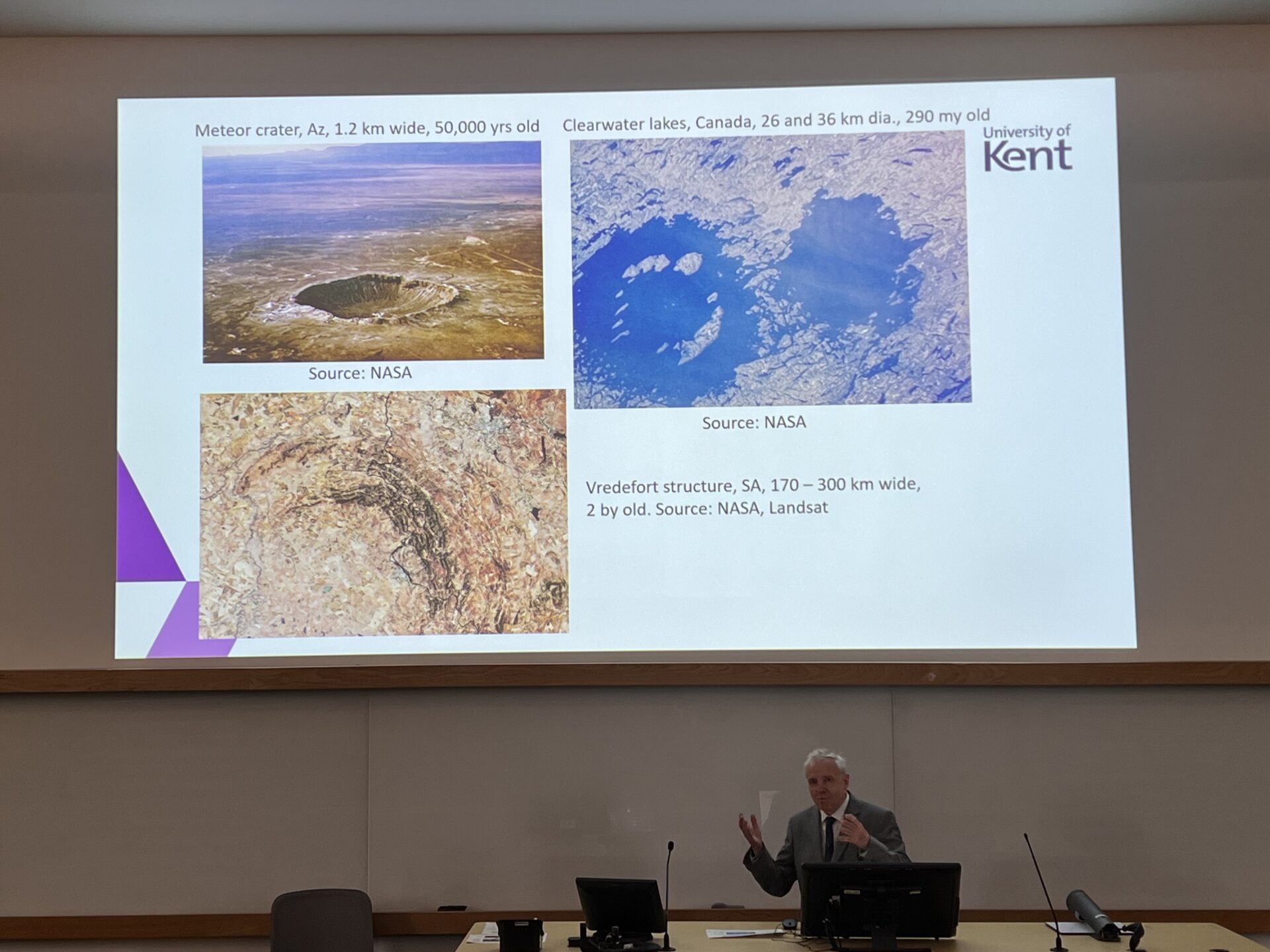
Kent Physics Centre warmly welcomed its own Emeritus Professor Mark Burchell, for his talk "Exploring the Solar System via Hypervelocity Impacts "
Kent Physics Centre welcomed its very own Professor Mark Burchell for the final public talk of the academic year, with around 40 in the audience.
Emeritus Professor Mark Burchell has a varied and distinguished career spanning from particle physics to planetary science, numerous space missions, and having an asteroid named after him! We are grateful to welcome him for his talk about “Exploring the Solar System via Hypervelocity Impacts”.
Impact events played a pivotal role in the formation of our solar system, and will continue to shape the future of space exploration. In space, relative impact velocities will often be on the order, or in excess, of kilometres per second. With two objects both moving towards each other at such speed, their relative impact speed can be exceed the speed of sound in the materials. Collision of this type are classified as hypervelocity impact events. In these events, the physics of collisions is quite unique; the speeds involved mean that atoms can be displaced before their neighbours have time to react (think of the trick of removing a tablecloth with the plates still on it). This gives rise to shock waves in the material, resulting in irreversible damage that we can recognise as impact craters. This is naturally accompanied by a release of ejecta from the impact site, which can be scattered as far away as five times the size of the impact crater. One need only look at the Moon to see the effects of these impact events.

Crater image By NASA – http://craters.gsfc.nasa.gov/assests/images/craterstructure.gif, Public Domain
Indeed, this raises the question of how impact craters can be identified on Earth. It might, at first glance, seem as easy looking for the large craters left behind. This is assuming that an asteroid is large enough to make it through Earth’s atmosphere. Asteroids smaller than 25 meters in diameter are unlikely to make it through the atmosphere, instead burning up and not impacting at all. The next challenge is that there is a 2/3 chance an asteroid will hit the ocean, leaving little to no evidence. Whilst there are methods for detecting these impacts, they are a lot more challenging to identify. To date, there have been only 190 impact craters confirmed to have hit Earth’s surface (A nice interactive map can be found here).
As mentioned before, the irreversible changes that occur as the result of these hypervelocity impact events can aid in their discovery and identification. Nearest to the surface, there can be found a layer of shattered rock, known as breccia, mixed with molten rock, or “impact melt”, which are formed by the immense heat and pressures involved in these impacts. Digging deeper, there can be found fractures in the bedrock, and “shatter cones”. These features all help in the identification of impact craters.

Perhaps the most well known impact event is the one that caused mass extinction for the dinosaurs. The consensus is that the Chicxulub crater in Mexico is the site of this impact. This is one of the largest impact craters that has been found, measuring nearly 200 kilometres across! It is predicted that this was caused by a 10 kilometre diameter object, travelling at around 20 kilometres per second.
The devastation caused by this event is sure to cause concern; when might the next event of this magnitude happen? Should we be worried? Are the sensational tabloid articles true?

Image credit: Don Davis / NASA.
This exact concern has been addressed by Professor Burchell in recent years. The initiative “Impact Earth!”, championed by Professor Burchell, aims to formalise and develop the measures in place to protect the Earth from asteroid impacts. This has initiative has motivated the UK parliament to recognise the risk posed by hypervelocity impact events. This motivation is shared as evidenced by the recent DART mission from NASA successfully targeted and pushed an asteroid off its trajectory, proving this as a viable defence mechanism for asteroids heading towards Earth. To further put the reader at ease, we may thank the solar system, and the stability of its orbits, for preventing objects that are catastrophically large from reaching Earth.
For the final cherry on top, the day this blog post is being published (30th June), it is International Asteroid Day! All the best to those who celebrate!
As mentioned before, this was the last talk of the academic year, but please be sure to join us in the coming academic year for another exciting schedule of talks!